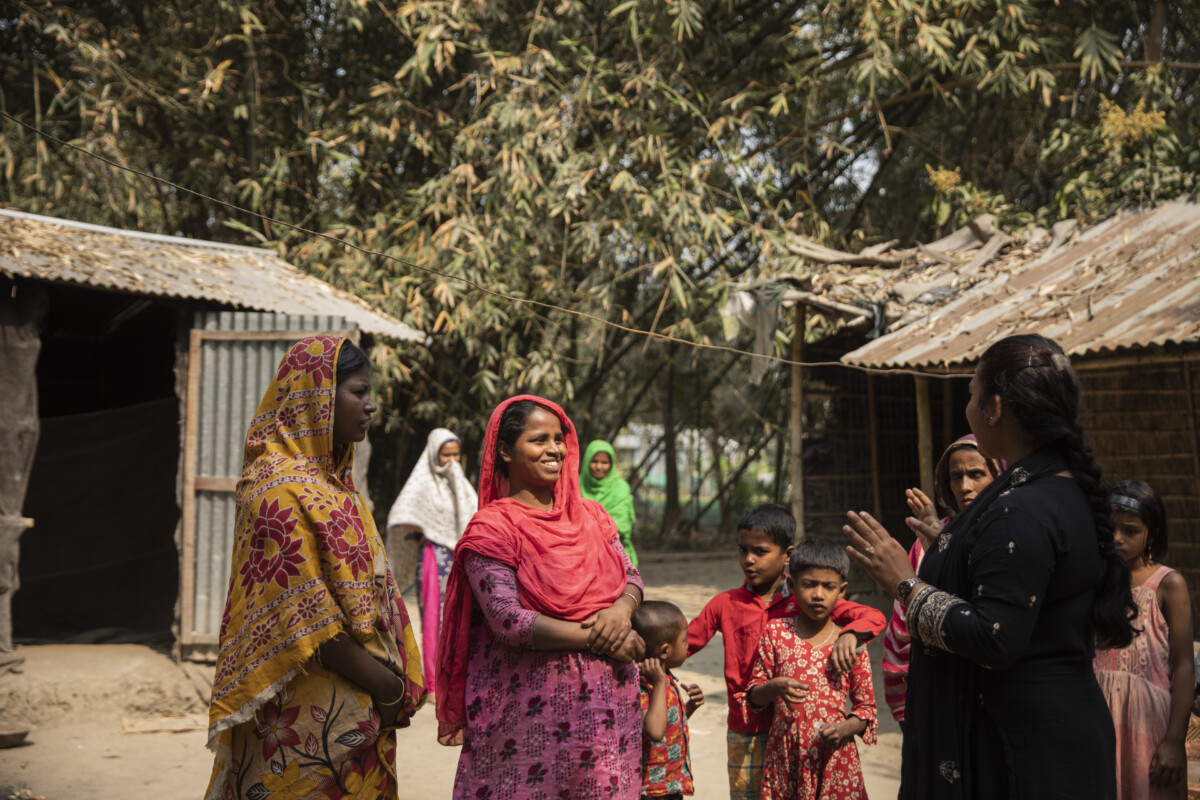In 2020, Pure Earth developed a 10-year strategic plan that included a commitment to investing in a long-term presence in certain priority countries and refined the organization’s processes for prioritizing countries. These are not firm rules but exist to guide decision-making while allowing the organization flexibility to adapt to evolving needs and opportunities.
Pure Earth prioritizes locations for long-term investment based on quantitative and qualitative factors. We start with a quantitative assessment of the “need case” across countries. Since Pure Earth works on lead and mercury, we analyze the need case for both chemicals. Pure Earth may ultimately prioritize a country based on the need case for either lead or mercury, and thus orient the country office portfolio toward that chemical (e.g. our Bangladesh and India offices work only on lead). In some cases, there is a strong case for working on both.
For lead, the “need” is based on the estimated mean childhood blood lead level (“severity”) and number of kids above 5 μg/dL (“population-at-risk”). Each country receives a ranked score from 1 to 205 for each of these two metrics. For example, Afghanistan would receive a severity score of 1 because it has the highest estimated mean childhood BLLs, but would receive a population-at-risk score of 9 because 8 other countries have more children above 5 μg/dL. The two scores are combined, and the countries are ranked again from 1 to 205 based on their combined score. The lower the “lead rank”, the greater the need.
For mercury, we don’t have similar country-by-country estimates for exposure severity or population-at-risk. Instead, we have estimates of the total tonnage of mercury used in artisanal and small-scale gold mining (the top emission source) among the top 38 countries. For mercury, countries receive a score from 1 to 38, with 1 having the greatest need.
The ranked list based on “need case” is then subjected to a review of the following qualitative factors that inform the final priorities:
- Existing experience, infrastructure, local knowledge, and relationships within the country and across relevant public, private, and civil society organizations.
- Government interest in the form of actions, commitments, requests for assistance, or other displays of willingness to cooperate with NGOs on environmental health issues.
- Local partner capacity to implement and sustain interventions.
- Safety of Pure Earth’s staff and collaborators.
- Feasibility of implementing programs that may require specialized equipment, local skills, a stable government, rule of law, suitable transportation and accessibility, or other feasibility factors that influence programmatic success.
- Cost of operating safely and effectively in the location.
- Socioeconomic factors. Pure Earth only conducts interventions in low- and middle-income countries. Beyond that, we may consider other socioeconomic factors that influence the effectiveness and sustainability of interventions. For example, we may view some upper-middle-income countries as sufficiently resourced to address chemicals management issues without philanthropic funds. Conversely, some low-income countries may have other challenges that are so overwhelming that lead interventions may be unproductive, unsustainable, or inappropriate.
- Doubts regarding quantitative estimates. In some cases, Pure Earth has data suggesting IHME estimates may be inaccurate, and we may adjust for that belief.
Current priority countries for long-term investment:
Pure Earth invests in maintaining staff and operational infrastructure in:
- Bangladesh
- Lead rank: 4
- Mercury rank: NA, not in the top 36 countries
- Notes: Pure Earth only conducts lead programs in Bangladesh
- Colombia
- Lead rank: 92
- Mercury rank: 2
- Notes: Colombia is prioritized primarily due to mercury use, however, Pure Earth maintains an active lead program as well
- Ghana
- Lead rank: 29 (originally 146 based on IHME BLL estimates, but revised based on primary BLL data collected from a large-scale national survey)
- Mercury rank: 25
- Notes: Pure Earth selected Ghana, in part, because we believed the lead score underestimated the actual burden. This suspicion proved correct.
- India
- Lead rank: 7
- Mercury rank: NA, not in the top 36 countries
- Notes: Pure Earth only conducts lead programs in India
- Indonesia
- Lead rank: 50 (will be revised in 2025 based on newer BLL data)
- Mercury rank: 1
- Notes: Pure Earth conducts both lead and mercury programs in Indonesia
- Mexico
- Lead rank: 26 (originally 60 but revised based on newer BLL data)
- Mercury rank: 14
- Notes: Pure Earth currently only conducts lead programs in Mexico
- Peru
- Lead rank: 20
- Mercury rank: 5
- Notes: Pure Earth conducts both lead and mercury programs in Peru
- The Philippines
- Lead rank: 18 (will be revised upon completion of ongoing national BLL survey)
- Mercury rank: 6
- Pure Earth conducts both lead and mercury programs in the Philippines
In addition to the above priorities for long-term investment, Pure Earth has active programs in the following countries and may consider further investments:
Finally, Pure Earth maintains an evolving list of “countries of interest” where we are potentially interested in expansion if the opportunity is right. These countries include, but are not limited to:
- Nepal
- Nigeria
- Pakistan
- Tanzania
- Zambia
- Zimbabwe
| Project | Country | Date | Region |
|---|

